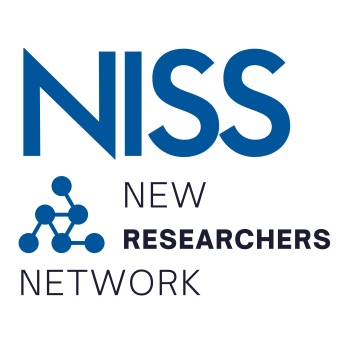
The 2025 NISS Virtual New Researchers Conference, held on June 6, brought together a dynamic group of early-career statisticians for a full day of presentations, discussions, and networking. This annual event—designed to highlight and support rising talent in the field—featured 19 new researchers sharing their work across diverse statistical applications, from environmental health and medical imaging to clinical trials and omics data analysis.
The event was organized by the NISS New Researchers Network Steering Committee, with the organizing committee chaired by Sharmistha Guha (Texas A&M University). Guha opened the day with welcoming remarks, acknowledging the efforts of the planning team, including Megan Glenn (NISS), and laying out the agenda for a robust and insightful day of scholarly exchange.
Tackling Real-World Problems with Statistical Innovation
Throughout the conference, participants shared cutting-edge methods and applications. In the opening session, Yikun Zhang (University of Washington) presented a non-parametric inference approach to assess dose-response curves, applying it to study the effects of PM2.5 on cardiovascular mortality—an important contribution to environmental epidemiology.
This session also featured Ishmael’s work on signal deconvolution in medical imaging, which offered novel ways to quantify cerebral blood flow through spectral derivatives, advancing diagnostic tools for neurological conditions.
Other highlights included:
-
Shanshan Wang’s dimension reduction methods for functional data with categorical predictors, applied to ADHD datasets.
-
Qian Tang’s fast kernel quantile regression algorithm with a smooth loss function for computational efficiency.
-
Thomas Johnson III (North Carolina A&T State University), who extended model-assisted estimation techniques to randomized response data, improving inference in sensitive survey contexts.
-
Kelvin’s two-step approach to kernel methods for compositional data, addressing limitations in zero-imputation.
Expanding the Boundaries of Applied Methodology
New researchers continued to push boundaries in later sessions. Presentations covered topics such as:
-
Oluwatobi’s stochastic expectation-maximization approach for interval data.
-
Manuel Garcia’s model selection for omics data with latent confounding.
-
Pengyuan’s comprehensive work on non-parametric methods for circular data, including multiple comparison techniques and real-world applications to traffic collision times.
Session moderators kept the event running smoothly, with scheduling adjustments ensuring space for lively Q&A and dialogue.
From Theory to Practice: Bridging Gaps with Advanced Techniques
The afternoon sessions introduced novel approaches to statistical testing, modeling, and data fusion:
-
Benedict presented a framework for evaluating the practical utility of normality tests.
-
Arangita explored ensemble models for differential gene expression in zero-inflated datasets.
-
Ku Zhu introduced hybrid control methods for clinical trials, leveraging both randomized and external control arms.
-
Changwoo Li presented alternative regression models for continuous proportional data.
-
Monitirtha proposed a multiple testing framework using E-values to control the false discovery rate.
-
Arnab Audi highlighted the power of transfer learning in regularized discriminant analysis.
Bayesian Models and Genetics in Health Research
In the final session, presenters focused on Bayesian and genetic approaches in health research:
-
Saikat Nandy (St. Jude Children’s Research Hospital) shared a Bayesian mediation model using neuroimaging data to study radiation effects on neurocognitive outcomes in medulloblastoma patients.
-
Diana compared design efficiencies in tuberculosis drug studies using orthogonal array composite designs.
-
Anisha presented findings on multi-trait polygenic risk scores linking hypertension and diabetes to Alzheimer’s risk across diverse populations.
-
Dr. Sandal Vasreman concluded the day with a public health study on diabetic retinopathy prevalence in Saudi Arabia, highlighting critical risk factors and the importance of routine screenings.
Recognizing Outstanding Contributions
The conference closed with an awards ceremony honoring four outstanding presenters:
-
Graduate Student Winners:
-
Yikun Zhang, PhD student, University of Washington
-
Thomas Johnson III, PhD student, North Carolina A&T State University
-
-
Postdoctoral Winners:
-
Ke Zhu, Postdoctoral Fellow, North Carolina State University
-
Saikat Nandy, Postdoctoral Fellow, St. Jude Children's Research Hospital
-
Guha extended heartfelt thanks to all presenters, judges, and organizers, and noted that participation certificates would be sent to each speaker. The conference emphasized the collective talent, creativity, and future potential of the next generation of statistical researchers. By creating a platform for new statisticians to connect, share, and learn from one another, the NISS Virtual New Researchers Conference continues to foster a growing and vibrant community at the forefront of statistical science.
